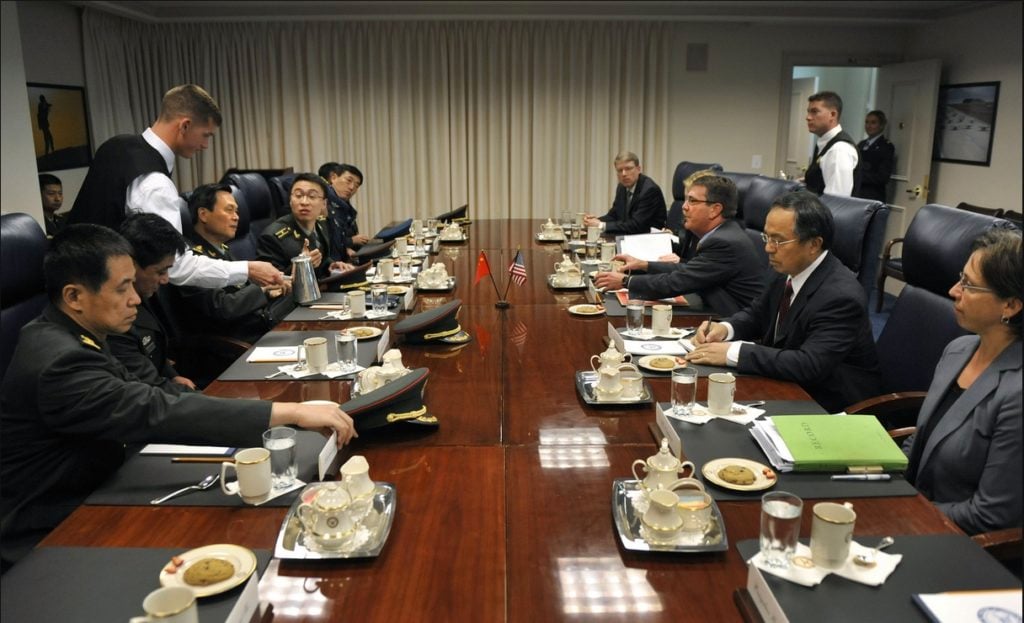New York Times journalist Keith Bradsher published a story on August 24 that contained the following statement:
“The Global Times, a newspaper directly controlled by the Chinese Communist Party, reported Wednesday that China was developing the capability to put multiple warheads on intercontinental ballistic missiles, or ICBMs.”
Mr. Bradsher’s language, especially the phrase noting that the Global Times is “directly controlled by the Chinese Communist Party,” strongly suggests that the report China was developing a new ICBM capable of carrying multiple warheads was a statement of fact authorized by the Chinese government. I was unable to find a Global Times report that justifies this suggestion.
Mr. Bradsher has not responded to my request to identify his source.
The Global Times did publish several items prior to Bradsher’s August 24 story that discuss the contents of a Jane’s Defense Weekly news item, published in the August 22 edition, claiming China had tested a new ICBM on July 24. The Jane’s report was based on an August 15 story by Bill Gertz, who cited “unnamed U.S. officials” as the source of his information about the test. All of the stories in the Global Times clearly indicated that the claim of a missile test, and the claim the tested missile was a DF-41 that could carry multiple warheads, came from the either the Jane’s Defense Weekly article, Bill Gertz, or other “Western”, “American” or “foreign” media reports.
In other words, the report that China was “developing” the capability to put multiple warheads on ICBMs originally came from Bill Gertz, was repeated by Jane’s Defense Weekly and was repeated again by the Global Times. It did not originate from or reflect the official position of the Chinese government or the Chinese military.
I suspect Mr. Brasher’s claim may be based on a comment in a Global Times story published on August 22, the date specified in his article. Under the headline “Outsiders Widely Rumor China Tests Strongest DF41 ICBM, Shock America” the Global Times reporter wrote that an individual named Wei Guoan, who is described as “a military expert familiar with the conditions of the Second Artillery” told the reporter that “having a third generation ICBM with multiple warheads that independently return through the atmosphere is, in fact, the Second Artillery’s developmental direction.” The Second Artillery is the branch of the Chinese military that operates China’s strategic missile forces. However, Wei also told the Global Times reporter that this “third generation ICBM is only in the research phase,” a critical additional piece of information Mr. Bradsher did not include in his story.
Researching a third generation ICBM is distinct from developing one, much less testing one. If Wei’s statement as reported by the Global Times is the basis of Brasher’s claim, a more precise description of Wei and the qualifications he attached to his remarks should have been included by Mr. Brasher in his reporting.
Wei could be a credible source. He is a researcher at an unidentified “department” who published an article on nuclear proliferation and disarmament in China’s National Defense Newspaper in December 2011. Wei has no additional record of open source publications, which could mean he is either very young or not accustomed to publishing his research in open sources. If Wei is a credible source it should be noted that he also told the Global Times reporter that “China’s pledge not to be the first to use nuclear weapons would not change:” another critical piece of information Mr. Bradsher did not include in his article. Wei’s statement contradicts claims by Bill Gertz and Jane’s Defense Weekly that the purpose of this supposed new Chinese missile was to dramatically expand China’s nuclear arsenal and acquire a first strike capability.
It should also be noted that the Second Artillery is not responsible for the research, development or testing of Chinese missiles. It simply operates the missiles after they are deployed. So Wei’s alleged familiarity with the Second Artillery does not necessarily imply he is also familiar with China’s missile research programs.
A follow-up report by the Global Times on August 24 contained an extensive set of remarks on China’s strategic missile forces by Peng Guangqian, a former researcher at the Chinese Academy of Military Science who holds the military rank of a general and has a long record of publications on strategic issues. Peng also stated China was working on a new generation of strategic missiles, but he told the Global Times that China “would not expand the scale” of its nuclear arsenal and that the new missiles would be replacements for the current generation. Moreover, Peng emphasized that the purpose of China’s effort to develop a new generation of missiles is to increase their survivability as well as their ability to penetrate missile defenses. In a related piece, also published in the Global Times, PLA Rear Admiral Yin Zhuo suggests the planned expansion of U.S. missile defenses in Asia is a ploy to try to get Chinese military planners to divert funds from conventional weapons to building more nuclear weapons, which, according to the admiral, “have no real use in actual war fighting.”
China’s nuclear posture is shrouded in secrecy and difficult to discern, even for Chinese experts and officials. Chinese authorities are notoriously opaque about China’s nuclear arsenal, even in the face of constant and long-standing international demands for greater transparency. Reliable information on China’s nuclear arsenal is, therefore, very difficult to find.
Perhaps this is why many U.S. analysts and reporters seize upon any information that seems to provide some insight into Chinese nuclear capabilities and intentions. In the rush to publish something new, they often lose important details and qualifications and fail to examine or specify the credibility of the source. Unfortunately, in this case, the article in America’s “newspaper of record” did not present all the news that was fit to print on this story, and gave us some news that wasn’t.

